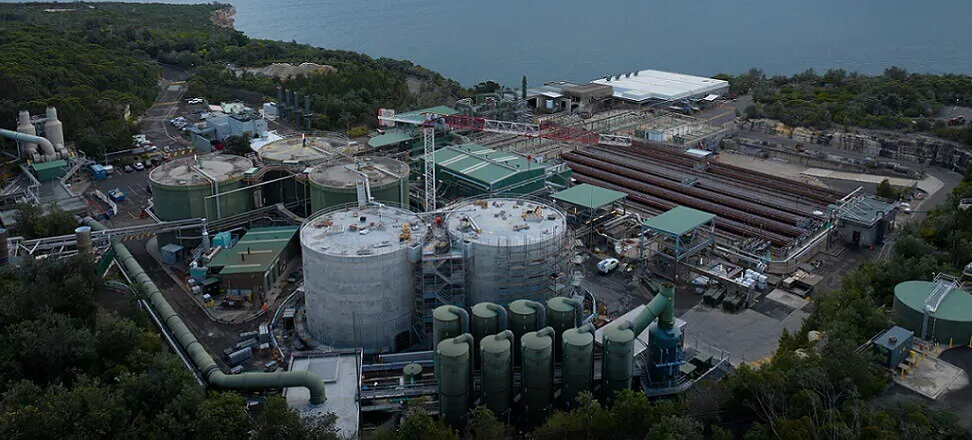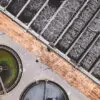News
North Head treatment plant supports Australian farmers with $94 million investment
The North Head wastewater treatment plant in Sydney is gaining importance not only as a wastewater treatment site, but also as a key element in New South Wales ( NSW) agriculture in Australia. With an investment of $94 million, it becomes a tool to support farmers in the region.
North Head treatment plant: what does the 94-million-dollar investment change?
Work began in 2021 and has now reached an important stage. Recently, two 15-meter high digesters were installed at the treatment plant. They will significantly increase fertilizer production for farmers in NSW’s Central Tablelands region. The amount of sewage sludge that can be reused as fertilizer will increase from 40 to 70 tons per day. The North Head wastewater treatment plant is successfully implementing upgrades, becoming an inspiration for similar companies in Australia and around the world.
The stabilized sludge has a noticeable fertilizer value. As employees of the treatment plant admit: “People think of sewage sludge as waste to be disposed of. But when we take a closer look, we find that they are full of useful resources – such as organic matter, nutrients and beneficial bacteria. Learning about the value and reuse of sewage sludge is part of thinking about a closed-loop economy.”

Impact on agriculture in New South Wales
Upgraded North Head treatment plant. will ensure the use of sewage sludge for agricultural purposes at almost 100 percent. Such a rate is to be achieved in 2043. This will help reduce the amount of waste going to landfills and reduce the proportion of chemical fertilizers used on farms, as well as improve soil structure. What’s more, farmers in the Central Tablelands will be able to use cheaper and greener fertilizers.
According to Kelvin Chow, Sydney Water North Head Project Interface Manager, the upgrades represent a major step forward in the way wastewater is treated: “We are proud to produce fertilizer from sewage sludge for agricultural purposes. These are benefits alone: we reduce our environmental impact, such fertilizers are stabilized and odor-free, and they guarantee the reliability of our facility.” – Chow says.
Fertilizers from North Head are used for soil improvement mainly on farms with large areas sown to rapeseed, wheat, oats or barley, as well as those running pastures for cattle. Their use is controlled by the NSW Environment Protection Authority (EPA).
North Head treatment plant focuses on growth and innovation
Sydney Water, which owns the North Head treatment plant, is constantly striving to reduce its carbon footprint and use alternative and renewable energy sources. At the treatment plant itself, nearly 60 percent of the consumption comes from renewable sources.
Such energy is created, for example, in a hydroelectric generator. The treated wastewater falls down a long discharge shaft into a deep-water collector in the ocean. Such water has enough kinetic energy to drive a generator, which thus generates electricity.
The plant also uses cogeneration. Biogas obtained during the sludge digestion process is burned, resulting in the production of electricity and process heat for the treatment plant.
The treatment plant also takes care to reuse water for technological purposes. Some of the wastewater is further treated and reused in the plant as cooling water and for rinsing equipment.
Wastewater treatment in the antipodes
The North Head treatment plant discharges treated municipal wastewater through a deep-water outlet located under the seabed at a distance of about 3.6 km from the shoreline. The ocean there is about 60 meters deep. Wastewater is released through diffusers distributed over a length of about 720 meters at the end of the tunnel in the East Coast area. Sea currents, flowing from north to south, carry treated wastewater to the ocean, and factors such as sunlight, salt water and wave action promote natural processes of further decomposition and disinfection.
“We monitor and check the quality of water in the ocean to assess whether the treatment plant is adversely affecting it. We are working with the NSW Environmental Protection Authority to study the marine environment around deep-sea ocean outfalls,” Sydney Waters officials report.
The North Head treatment plant treats about 336 million liters of wastewater each day. It serves a population of 1 million from the Sydney region, where a total of 29 wastewater treatment plants operate, 23 of which produce fertilizer from sewage sludge. The North Head treatment plant alone produces about 12,000 tons of sludge per year. The ongoing upgrade is expected to last until the end of 2024.
Source:
- https://smartwatermagazine.com/news/sydney-water/94-million-north-head-wastewater-facility-upgrade-set-help-nsw-farmers
- https://www.sydneywater.com.au/education/wastewater-recycling/wastewater-treatment/north-head-wastewater-treatment.html
- https://www.sydneywatertalk.com.au/nh-biosolids
- https://www.epa.nsw.gov.au/your-environment/recycling-and-reuse/resource-recovery-framework/current-orders-and-exemption/resource-recovery-biosolids

 Polski
Polski







